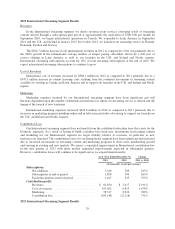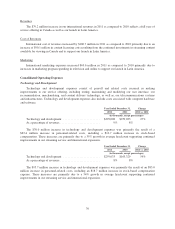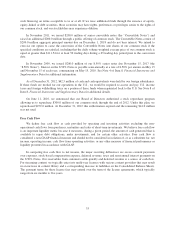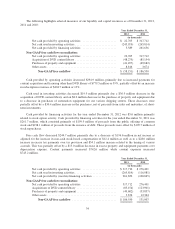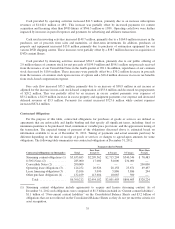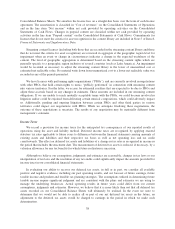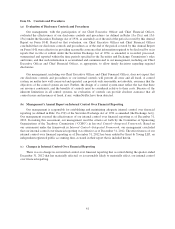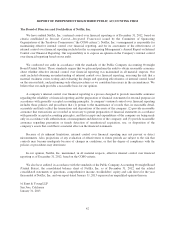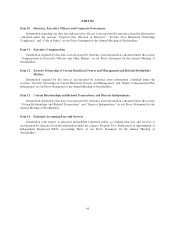NetFlix 2012 Annual Report Download - page 41
Download and view the complete annual report
Please find page 41 of the 2012 NetFlix annual report below. You can navigate through the pages in the report by either clicking on the pages listed below, or by using the keyword search tool below to find specific information within the annual report.Critical Accounting Policies and Estimates
The preparation of consolidated financial statements in conformity with accounting principles generally
accepted in the United States requires management to make estimates and assumptions that affect the reported
amounts of assets and liabilities, disclosures of contingent assets and liabilities at the date of the financial
statements, and the reported amounts of revenues and expenses during the reported periods. The Securities and
Exchange Commission (“SEC”) has defined a company’s critical accounting policies as the ones that are most
important to the portrayal of a company’s financial condition and results of operations, and which require a
company to make its most difficult and subjective judgments. Based on this definition, we have identified the
critical accounting policies and judgments addressed below. We base our estimates on historical experience and
on various other assumptions that we believe to be reasonable under the circumstances. Actual results may differ
from these estimates.
Streaming Content Accounting
We obtain content distribution rights in order to stream TV shows, movies, original programming to
subscribers’ TVs, computers and mobile devices. Streaming content is generally licensed for a fixed fee for the
term of the license agreement which may have multiple windows of availability. The license agreement may or
may not be recognized in content library.
When the streaming license fee is known or reasonably determinable for a specific title and the specific title
is first available for streaming to subscribers, the title is recognized on the Consolidated Balance Sheets as
“Current content library, net” for the portion available for streaming within one year and as “Non-current content
library, net” for the remaining portion. New titles recognized in the content library are classified in the line item
“Additions to streaming content library” within net cash provided by operating activities on the Consolidated
Statements of Cash Flows. The streaming content library is reported at the lower of unamortized cost or
estimated net realizable value. We amortize the content library on a straight-line basis over each title’s
contractual window of availability, which typically ranges from six months to five years.
The amortization of the streaming content library is classified in “Cost of revenues” on the Consolidated
Statements of Operations and in the line item “Amortization of streaming content library” within net cash
provided by operating activities on the Consolidated Statements of Cash Flows. Costs related to subtitles,
dubbing, and closed captioning are capitalized in “Current content library, net” on the Consolidated Balance
Sheets and amortized over the window of availability. Payment terms for these license fees may extend over the
term of the license window, which typically ranges from six months to five years. For the titles recognized in
content library, the license fees due but not paid are classified on the Consolidated Balance Sheets as “Current
content liabilities” for the amounts due within one year and as “Non-current content liabilities” for the amounts
due beyond one year. Changes in these liabilities are classified in the line item “Change in streaming content
liabilities” within net cash provided by operating activities on the Consolidated Statements of Cash Flows. We
record the streaming content library assets and their related liability on our Consolidated Balance Sheets at the
gross amount of the liability. Payments for the titles not yet available for streaming are not yet recognized in the
content library but in prepaid content. Minimum commitments for the titles not yet available for streaming are
not yet recognized in the content library and are included in Note 5 of Item 8, Financial Statements and
Supplementary Data.
When the streaming license fee is not known or reasonably determinable for a specific title, the title does
not meet the criteria for asset recognition in the content library. Titles do not meet the criteria for asset
recognition in the content library because the underlying license agreement does not specify the number of titles
or the license fee per title or the windows of availability per title, so that the license fee is not known or
reasonably determinable for a specific title. Typical payment terms for these agreements, which can range from
three to five years, require us to make equal fixed payments at the beginning of each quarter of the license term.
To the extent that cumulative payments exceed cumulative amortization, prepaid content is recorded on the
37




